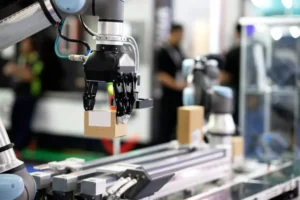3300 XL 8 mm Probe System Wiring Guide for Industrial Automation
Mastering Your 3300 XL 8 mm Probe System: A Complete Wiring Diagram Guide
The Bently Nevada 3300 XL 8 mm probe system is a critical component in industrial automation. It provides precise, non-contact measurements for machinery protection. A correct wiring setup is paramount. This guide provides a complete wiring diagram overview. It also offers essential insights for seamless integration into your control systems.
Understanding the 3300 XL Probe System Components
The 3300 XL system consists of three main parts. First, the probe measures displacement or vibration. Next, the extension cable connects the probe to the proximity sensor. Finally, the proximity sensor (or transducer) converts the measurement into a voltage signal. Proper wiring must connect these three components. It then sends the signal to your main factory automation system. Each component plays a vital role in accurate data collection.

The Core Wiring Diagram: From Probe to Terminal Block
Wiring the 3300 XL system follows a simple three-wire setup. This configuration includes Power, Common, and Signal. The proximity sensor has three terminals. One terminal connects to the DC power supply. Another connects to the common or ground. The third terminal carries the output signal. This signal is a DC voltage proportional to the probe’s gap. Therefore, a secure connection to all three terminals is essential. Loose connections can introduce noise or cause signal loss.
Connecting to Control Systems: PLC and DCS Integration
The 3300 XL system’s signal output must connect to a PLC (Programmable Logic Controller) or DCS (Distributed Control System). The output signal can be fed directly into an analog input card. You should ensure the PLC or DCS input module is configured for the correct voltage range. This ensures accurate signal interpretation. Moreover, a dedicated analog input card is highly recommended. Using a dedicated card minimizes electrical noise and cross-talk. This is crucial for precise machine health monitoring.

Ensuring Power and Grounding Integrity
A stable power supply is non-negotiable for reliable operation. The 3300 XL requires a clean, regulated DC power source. Proper grounding is equally important. The system’s common terminal must be tied to the chassis ground. This creates a clear path for electrical currents. As a result, it prevents ground loops and signal interference. Proper grounding also protects against electrical surges. It is a fundamental practice for all robust industrial automation setups.
Troubleshooting Common Wiring Issues
Experience shows that wiring issues often arise. The most common problem is signal drift or no output. Always check power supply voltage first. Next, inspect all connections for looseness or corrosion. A simple continuity test can verify cable integrity. Additionally, always use shielded cables. The shielding should be grounded at one end only. This prevents noise pickup from surrounding equipment. A well-executed wiring plan proactively prevents these common issues.
Author’s Insight: Investing in Reliability
A thorough and meticulous wiring job is not just a technical step. It is a critical investment in data integrity and system reliability. In my view, overlooking the fundamentals of wiring is a significant risk. Accurate data from your 3300 XL system directly impacts predictive maintenance decisions. Therefore, a small investment of time in correct wiring pays huge dividends. It ensures your machinery remains safe and operational.

Real-World Application: Turbine Monitoring Solutions
The 3300 XL probe system is ideal for monitoring axial thrust on steam turbines. Its wiring diagram connects the probe to a PLC. The PLC then processes the data. This data is displayed on an HMI. If the thrust exceeds a predefined limit, the PLC triggers an alarm. This proactive solution prevents catastrophic failure. A reliable wiring setup is the foundation of this entire system. It ensures the data fed into the PLC is always correct.
To discover more about our advanced solutions and high-quality industrial products that integrate with systems like the 3300 XL, visit our website. Our portfolio covers a wide range of needs for industrial automation and asset management.
Discover how Powergear X Automation Limited can support your projects.






